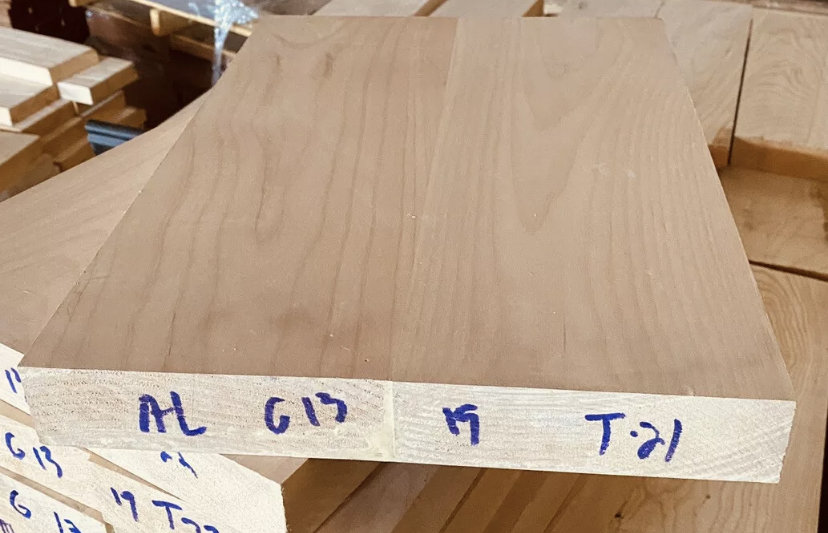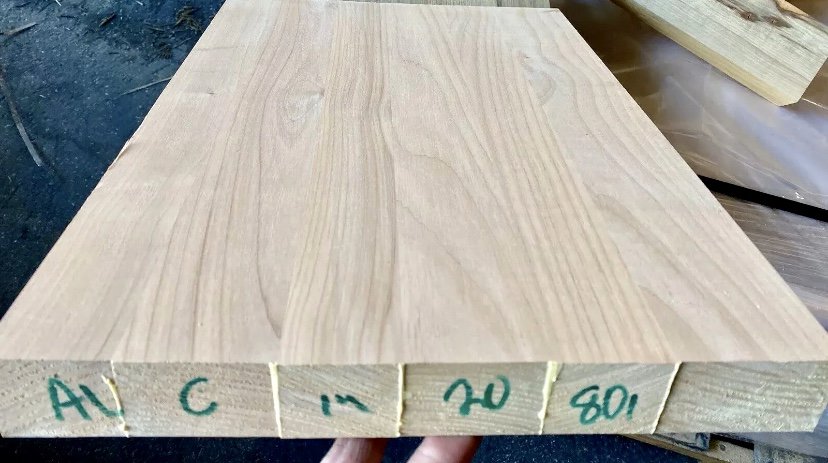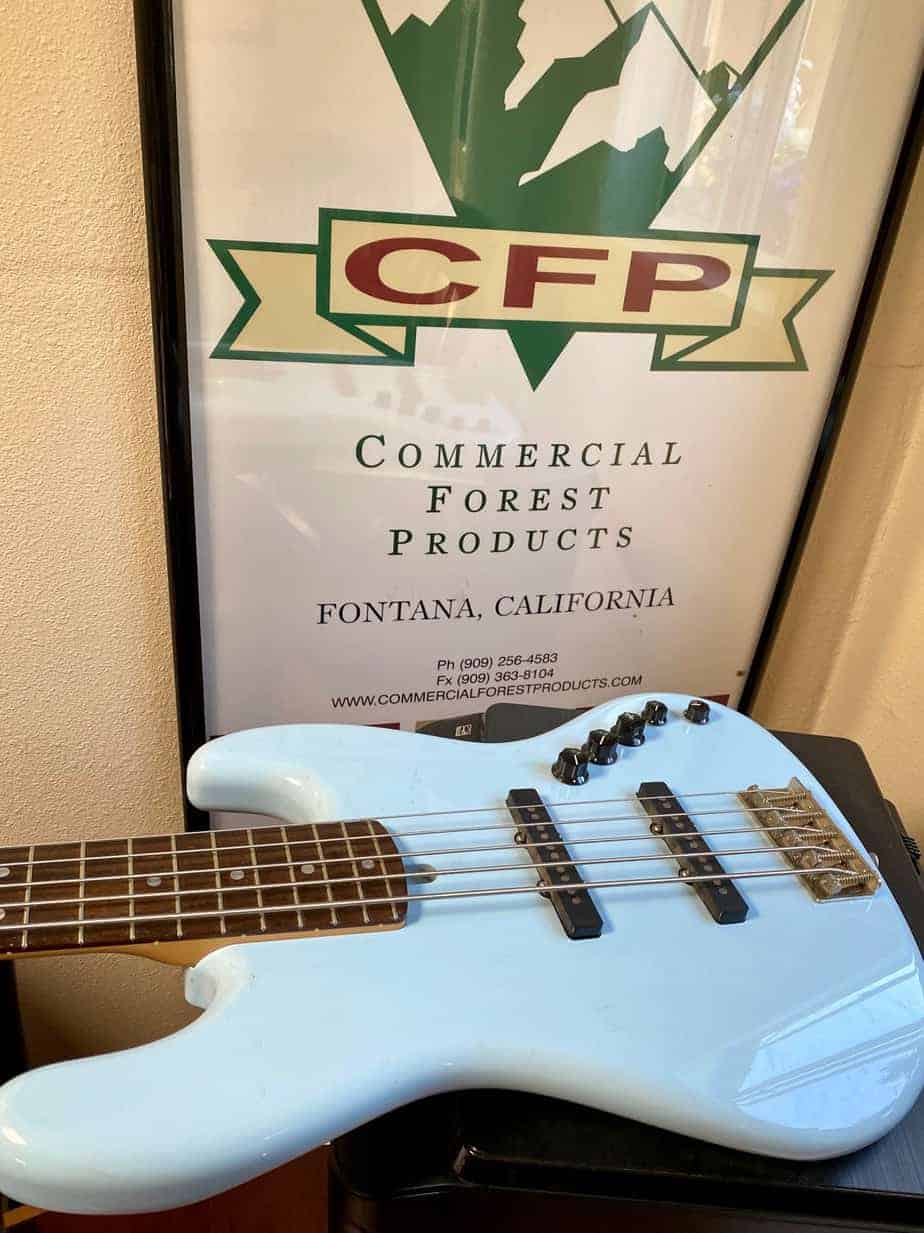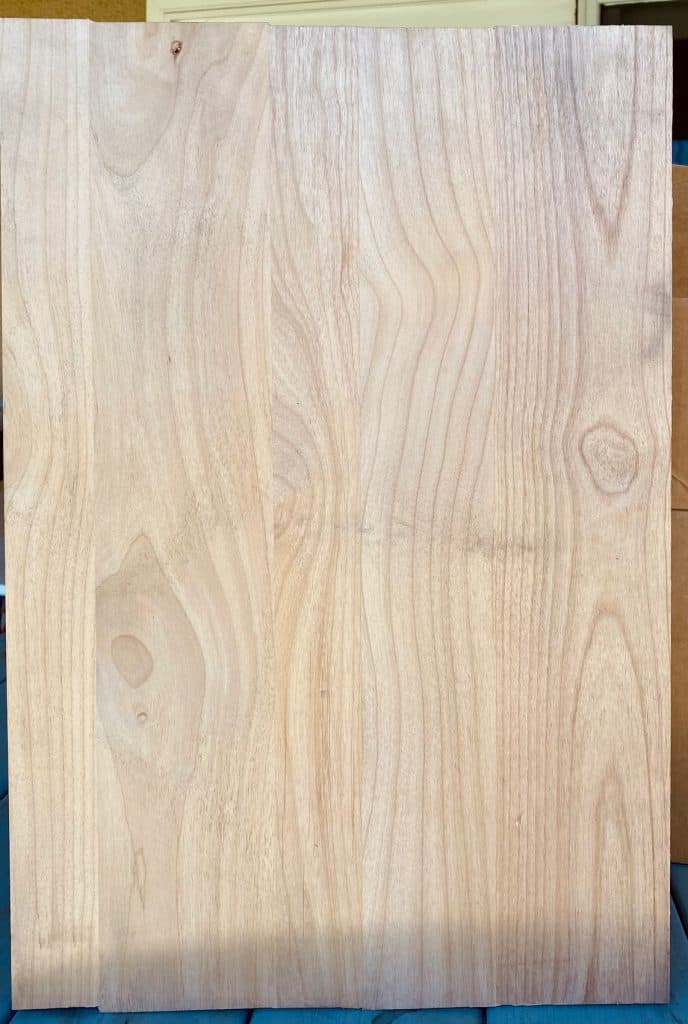Alder Lumber: 8/4 Guitar Body Wood
| Scientific Name | Alnus rubra |
|---|---|
| Common Names | red alder, Western Alder |
| Family | Betulaceae |
| Genus | Alnus |
| Higher Classification | Oleeae |
| Rank | Fagales |
| Kingdom | PLantae |
| Region of Origin | Mid West, North America, Pacific Coast |
| CITES Appendix | No |
| IUCN Red List of Concern | No |
| Durability | Low |
| Density | Low, Medium |
| Janka Rating | 595 |
| Scent | None |
| Average Weight (LB) per Board Foot (KD) | 2.6 |
| Specific Gravity | .46 |
| Average Board Width (inches) | 6.75 |
| Average Board Length (feet) | 8.75 |
| Average Tree Diameter (inches) | 30 |
| Average Tree Height (feet) | 115 |
| Texture | Soft, Uniform |
| Heartwood Color | Brown, Red, Tan |
| Sapwood Color | Brown, Red, Tan |
| Grain Type | Fine, Porous, Slight, Uniform |
| Heart/Sap Distinction | Weak |
| Drying Difficulty | Dries consistently, Low, Low risk of kiln defects, Uniform acclimation |
| Commercial Availability in US | High |
| Cutting Ease | High, Machines well, Mild blunting on tool blades |
| Glue Difficulty | Adheres well, Low |
| Color Tone | Brown, Red, Tan |
| Stability | High |
| Finish Difficulty | Accepts stains evenly, Easy to finish, Low |
| Thickness Availability | 10/4, 12/4, 4/4, 5/4, 6/4, 8/4 |
| Plain Sawn Availability | Yes |
| Quartersawn Availability | Rarely |
| Live Sawn Availability | Rarely |
| Veneer Availability | Yes |
| Grades Available | #1 Common, #1 Shop, #2 Common, #2 Shop, Cabinet, ComShop, Custom Cabinet, Custom Jacket Board (CJB), FAS, Firsts, Frame, Jacket Board, Premium Frame, Select, Superior, Superior 1F |
| Milling Available | Edge Glue, Gang Rip, Rough-sawn, S2S, SL1E, SL2E |
| Millwork Wood | Yes |
| Birdseye Figure | No |
| Curl Figure | Rare |
| Quilt Figure | No |
| Flame Figure | Rare |
| Furniture Wood | Yes |
| Turning Wood | Yes |
| Flooring Wood | Rare |
| Guitar Wood (Acoustic) | Rarely |
| Guitar Wood (Electric) | Yes |
| Price | $ |
| Similar Species | Birch, Cherry, Maple, Poplar |
Why Alder is Good for Woodworking
Alder produces a very resonant and balanced tone with the upper midrange pushing through as well as great sustain and extra attack. Due to its closed pores and close grain, it takes finishes very well and is usually finished in solid colours.
source: Ash vs. Alder: The Fender Tonewoods, (World of Music)
Traditionally, it is a popular choice among woodworkers and guitar builders for 5 reasons:
- Machine-ability. It machines well. The wood is easy on knife blades. Additionally, the grain tends not to fuzz up.
- Weight. It is a medium weight wood. Additionally, its density stays relatively consistent from board to board. Thus, electric guitar bodies maintain a narrow range of finished body weight.
- Wood Tone. Although this is a subjective criteria, many luthiers believe it has excellent sonic qualities. For example, it’s often described as full bodied, with solid mids, good sustain and a deep low-range.
- Availability. It is a commonly available wood. Additionally, it is rarely subject to supply constraints. Thus, it’s a logical choice for a production wood.
- Grain. Alnus rubra has a subtle grain. It’s similar to maple, walnut, poplar and cherry. Accordingly, the same wood specie can take many different appearances. Thus, it is a very versatile wood.
- Finishing. This West Coast wood is easy to finish. However, it also paints well.
Fender adopted alder for electric instrument bodies in mid-1956, probably for no other reason than it was there; it was readily available and more affordable than ash. Ever since, it remains the body wood for the majority of Fender electric instruments. It was and still is a very good choice.
source: Ash vs. Alder: What’s the Difference? Get the facts on Fender guitar body woods, (https://www.fender.com/).

Technical Information
- Scientific name: Alnus rubra
- Alternative Names: Western Alder, Red Alder
- Region of Origin: Western to Mid-Western United States, Western Canada
- Average Dried Weight: 29 LB/cubic foot
- Janka Hardness Rating: 595
- Specific Gravity: .46
- IUCN Red List: No
- CITES wood: No
What is Alder Wood?
Alder has an excellent reputation for machining and is also a desirable wood for turning. It can be nailed without splitting or screwed without pre-drilling. This wood glues well and can be sanded to a smooth finish. Alder is evenly textured, with a subdued grain pattern, and has a moderate weight and hardness.
Source: The Hardwood Distributor’s Association (The Rise of Alder – A Wood Highlight of Alder Lumber, http://www.hardwooddistributors.org/)
Shockingly, woodworkers and guitarbuilders may be surprised to know that Alnus rubra is a member of the birch family!
Alder Lumber Grades
Although it is a hardwood, its board footage is rarely graded by NHLA hardwood grades. Instead, sawmills, distributors, wholesalers and distributors primarily use a system of proprietary wood grades
What are the Alder Lumber Grades?
Here are its wood grades:
- Firsts. Firsts the highest grade. They are a rarely marketed wood grade.
- Superior. This is commonly believed to be the highest grade of alder. 83%+ clear on the best face. 66%+ Cabinet grade on worse face. Widths= 5″+.
- Superior one face. 83%+ clear one face. No limitation on back face. Minimum width = 4.5″
- Custom Jacket Boards. 83%+ clear one face. No limitation on back face. Widths = 3.5-4.5.” only.
- Cabinet. 66%+ clear 2 face. Widths = 4.5.+” only.
- Jacket Boards. 50%+ clear one face. Widths = 3-4.5.” only.
- Custom Shop. 66%+ clear one face. No limitation on back face. Widths = 4.5.”+
- Common Shop. 50%+ clear one face. No limitation on back face. Widths = 4.5.”+
- Premium Frame. 83%+ structurally sound one face. No limitation on back face. Widths = 4″+
- K Strip. 83%+ structurally sound one face. No limitation on back face. Widths = 3-4 3/4″ only.
- Rustic. 66%+ structurally sound one face. No limitation on back face. Widths = 5″+
- Standard Frame. 66%+ structurally sound one face. No limitation on back face. Widths = 4″+
- #3 Shop. 33%+ structurally sound one face. No limitation on back face. Widths = 3″+
Alder Grade Subcategories
Additionally, certain grades have subcategories. Alder subcategories include skip and color.
For example, Superior Skip is a discounted subcategory of superior grade . It is discounted because the boards are slightly under standard thickness. 4/4 Superior Skip may range from 3/4-“-7/8″ thickness instead of standard 15/16” thickness alder.
Additionally, 4/4 Superior Color sells at a discount because of wood color variation. Specifically, the colors varies from kiln drying issues, atypical heartwood, sapwood, log stains, etc.
What is Alder Wood Good for?
In addition to luthiery, alder has many practical woodworking applications.
Most of the higher grade lumber is used for furniture, cabinetry, and turned products. Alder is also used in doors, millwork, decorative woodwork, carvings, and edge-glued panels. Alder dries to an even honey tone and can be finished to resemble more expensive fine-grained species.
Alder Lumber Grades: Why are they different than other hardwoods?
With over 25 years in the hardwood lumber business, I have always know alder wood grades as different than those of oak, maple and ash. However, I wanted to find out why they were different. Thus, I reached out to one of the largest Alnus rubra sawmill operations in the world, Northwest.
On April 2, 2020, Northwest Hardwoods Marketing Specialist Jacob Schriner gave us a brief history on how their alder proprietary grades evolved.
Here is the article/blog we put together around the grading of Alder. Please let me know if you have any questions, concerns or would like anything else. Thank you! Jacob Schriner.
The History of Grading
Over 50 years ago Northwest Hardwoods entered the hardwood lumber business with a single sawmill in Arlington, WA that focused on cutting Alder. At this time it was considered a low value, little known hardwood. Accordingly, it was used for a variety of different applications and considered an inferior wood. Unlike cherry, red oak and hard maple to name a few.
The lumber was graded from the better face and had unlimited cuttings, compared to eastern hardwoods which have a limited number of cuttings by grade.
There were five standard grades of alder:
- Select & Btr,
- #1 Shop
- #2 Shop
- #3 Shop
- Frame
Northwest Hardwoods envisioned Alnus rubra developing into a highly valued hardwood comparable to more well-known eastern hardwood species. To
accomplish this, NWH employed a strategy called Consultative Selling.
Making New Alder Grades
Consultative selling is a technique where salespeople and quality control people sit down with customers and ask them what they want and need in a product to best fit their businesses.
The general feedback on Alder was positive. However, the standard grades were not aligned with the customers’ needs. For example, the #1 shop was a clear one face grade where the back could be sound (have small knots on the back of the cuttings). This grade simply did not work for cabinet makers.
Proprietary Wood Grades
This was the inception of proprietary grading. NWLH separated the #1 shop
into two separate grades: Cabinet and Custom Shop. Cabinet grade is graded from the worst face and yields 66.67% clear face cuttings. Custom Shop is graded from the better face and yields 66.67% clear face cuttings.
Cabinet manufacturers immediately saw the value in the Cabinet Grade and other customers, like furniture makers who could use one face cuttings saw the value in the Custom Shop grade. This same approach was used to create the Premium Frame and Standard Frame grades for the upholsters. Premium Frame, which was graded for a small tight defect structure was used to produce long front, back and top rails in upholstered furniture.
Standard Frame was used for the shorter cuttings in upholstered furniture.
In the case of Superior grade alder, NWH was asked to provide a grade that went above and beyond the specs of Select & Btr, which at the time the highest grade of alder offered. The resultant product was named Superiors. This continues to be the highest grade of (sic widely available) alder on the market today.
Once this new proprietary grading system was in place the market began to adopt these new names and specifications. Once the customers started demanding these application specific grades, it did not take long for all alder producers to conform to this grading structure.
NHLA Reaction to New Alder Grades
Eventually, the NHLA asked members to vote on formally adopting NWH core proprietary grades and eliminate the prior grades of
Select & Btr, #1, #2, #3 SHOP and Frame.
Today, one can see Superiors, Cabinet, Custom Shop and other NHLA grades described in the NHLA Rule Book.
Alder Wood: Luthery Questions
Is Alder heavier than Swamp Ash?
Generally speaking, alder lumber is slightly lower in weight than Swamp Ash lumber. However, we are referring to hardwood lumber averages.
Certainly, we weigh plenty of 8/4 Swamp Ash or Punky Ash wood with a lower density than 8/4 Alder. Additionally, Ash wood that is not Southern White Guitar Ash, is almost always heavier than Alnus rubra.
However, there is one significant weight-related difference between Alder and Swamp Ash. Alder has a much narrower range of weight than Punky Ash. For example, most kiln dried alder boards weigh between 2.4-2.8 LB per board foot. Alternatively, many 8/4 Guitar Ash weights are between 2.0-3.0 LB/BF. Thus, alder is more consistent than guitar ash, weight-wise.
What Does an Alder Guitar Body Blank Look like?
Here is what a typical unfinished Alder guitar body blank looks like.

For example, a blank like this is used to make Fender-style Alder body guitars, such as Stratocaster and Telecaster models. Most likely, it will be stained a natural finish because of its uniform construction and appearance.
- Consistent color
- Matched grain
- 2-3 piece construction
Additionally, below is a typical paint-grade alder bass body blank. Technically, this blank could be stained. However, it’s most likely for a solid color paint body.

Significantly,both its construction and appearance has more variation than the stain-grade blank above. Accordingly, the reason is that solid paint hides variation and intact defects.
- Inconsistent color
- Unmatched grain
- 4-6 piece construction
6 thoughts on “ALDER LUMBER: 8/4 Wood 2024”
Comments are closed.




Pingback: 🌳 Swamp Ash Wood Definitive Guide - Commercial Forest Products 2020
Pingback: 🌳 Spanish Cedar for Humidors & Guitars - Commercial Forest Products
Pingback: American 4/4 Red Gum Lumber - Commercial Forest Products
Pingback: Top 5 Best Wood For Guitar Bodies By A Lumber Professional - Commercial Forest Products
Pingback: Bass Wood Or Basswood? Lumber/Luthiery? 2022 - Commercial Forest Products
Pingback: CHATOYANCY - What Is Chatoyance In Figured Wood?2022